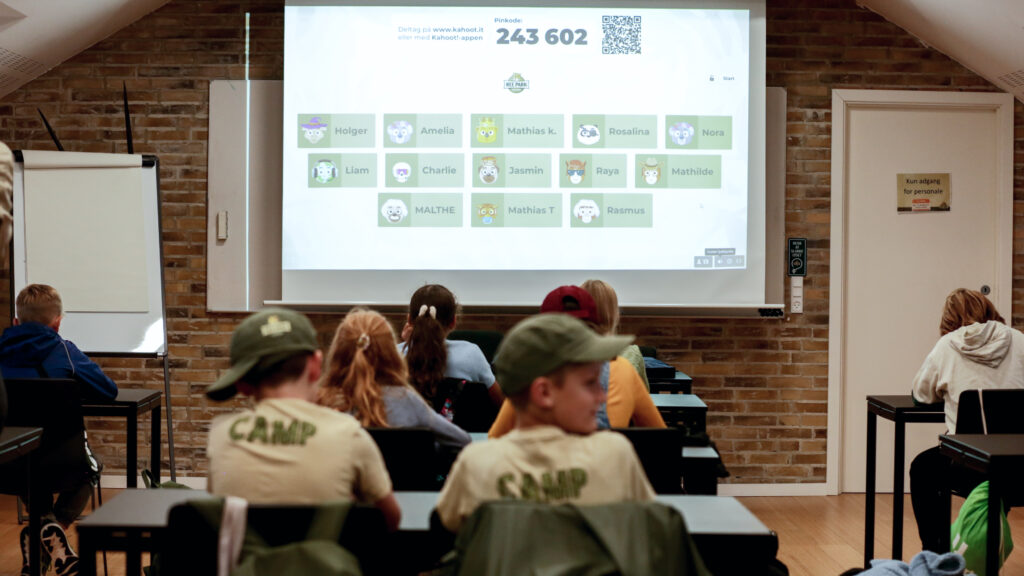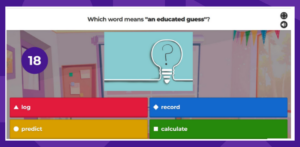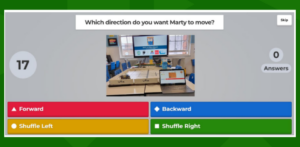Allen Tsui teaches Computing in East London, working with children from ages 3 to 11. Allen’s been a Kahoot! Teacher of Awesome since 2018, and has innovated pencil and paper and traditional classroom curriculum by way of Kahoot! tools and features. Though his family may think he spends too much time online, @TsuiAllen enjoys connecting with and learning from teachers everywhere via online communities and digital networks. Allen nurtures his own community of inspiration and pedagogy conversations, too as he coordinates digital discourse with @compscitsuion Threads.
Kahoot! has been ingrained in Allen’s instruction – from planning to presentation, and even post-assessment reviews! Across any and every class at Willowbrook Academy, Allen explains that he hosts more than fifteen live kahoots each week. That’s expert level, if we do say so ourselves! Read on to hear how Allen’s incorporating Kahoot! tools to make learning awesome, everywhere.

Rooted in standards and evidence
The statutory requirements of curriculum for schools in England – set by the Ministry of Education and official Agent – emphasize expectations for a “knowledge rich curriculum”, a learning environment with high expectations, where learning and success is celebrated and acknowledged by highly disciplined educators. Kahoot! presents a wonderfully powerful opportunity and platform to bring some sparkle and enrichment into this knowledge-rich curriculum and experience. From prime time TV quiz shows to ISTE standards for technology literacy, Kahoot! tools foster pedagogy in both content and delivery. Students even accessing Kahoot! Tools, via online or by mobile application, provides an incredible achievement with regard to computing curriculums and standards.
Pedagogy embedded with processes and routines
Classroom and instructional time is precious, and even one minute wasted by distraction, repeated routines, or confused procedures is too much! Allen explains that Kahoot! tools harbor and foster learning, even outside of live gameplay:
Getting to this point [Kahoot! gameplay] alone means that the students are clearly demonstrating abilities to independently, effectively, and confidently access technology.
Skills for digital citizenship develop further across each step of login and participation. With each click, students and players are understanding the norms and expectations for engaging online, and reconciling the values and ethos behind appropriate digital participation and activity. Allen shares that the Game PIN prompt allows students to consider implications of good/bad choices and consequences, explaining:
Students I invite to play Kahoot! are always reminded to type in their real names which gives the class scope to reflect on suitable game names and their potential implications to avoid becoming a victim of cyberbullying.
Allen encourages educators to monitor progress, growth, and achievement through the unrelated learning experiences within the Kahoot! Curriculum, including:
- One-to-one number correspondence review as students enter unique Game PIN sequences to join the game. Differentiate this routine to more advanced levels, too, and review place value or multi-digit numbers as students join for gameplay.
- Follow multi-step routines and directions to reinforce routines and procedures for younger students and learners. The sequences and click pathways to find Kahoot! on their technology or devices, recall the login process, and find the “Lobby” encourage students to build confidence and autonomy for their learning
- Spelling and vocabulary practice as students input their own name, or the name of/for their team.
#KahootTip To keep gameplay anonymous, prompt students to join with a username by way of responding to a class question or prompt. For example, ask: “What’s your favorite ice cream flavor?” while each student enters their preference as their username. In just a blink, your Kahoot! Lobby will be filled with delicious desserts and flavors!
Differentiating data from and with Kahoot!
The automatically generated reports from Kahoot! can be aggregated for both discussion and data collection! Allen explains, “The reports tool on Kahoot! is a great data generator for the children to learn how big data is created and can be powerfully applied.” Consider hosting a “data demonstration” with students by creating a kahoot with review or previously taught content. Allen used a nine-question Kahoot!, including the question below, to conduct this learning session with his eight and nine year old students:

After completing questions and reviewing prompts that may be considered ‘easy’ and of little consequence, Allen presented the Reports to his students for classroom discussion. Conversation and reflection prompts included:
- How might my correct and incorrect responses affect my overall score and percentage?
- In what ways is a correlation evident between the latency and correctness of each question answered?
- How can data reflection and review help to improve long-term learning and study techniques?
Prioritizing review of both content and processes helps to make each classroom experience meaningful and purposeful! Allen calls these, “by-products, in addition to the real target of simply exposing students to a curricular goal or technical terminology”.
Innovative instruction with familiar formats
Complex content and curriculum on the classroom agenda? Allen explains, “Kahoot! is a very accessible way for everyone to simply have a go with a low stakes approach compared to traditional methods of instruction”. While introducing new topics for computer programming, Allen relied on the familiar format of Kahoot! to leverage new technical terminology and complex vocabulary.
Allen introduced his elementary classroom to “Marty” – a self-directed and propelling robot – by way of Kahoot! tools. With the Poll question type, students voted on the direction, movement, and dynamics of the robot.

By using a familiar format on Kahoot!, students were able to successfully engage and understand the functions of a new tool, too! The “Marty” tool prompted students to consider computer programming skills and language around motion, action, sound, time and connectivity! These foundations for computation learned via Kahoot! acted as a prerequisite for critical thinking in decomposition, abstraction, and patterns. Allen further extended this content knowledge and learning as students explored additional curricular goals with NASA Control Center programs and Mars Rover simulations.
Whether you’re relying on Kahoot! as a tool for instructional delivery, or as a foundation for furthered curriculum, Allen encourages educators to employ Kahoot! For any class, curriculum, or community use! The tools Allen embedded into classroom instruction are all available and accessible with Kahoot!+ Gold, now available for 20% off! Upgrade or update your account to take advantage of premium question types, advanced reporting, and player customization.





